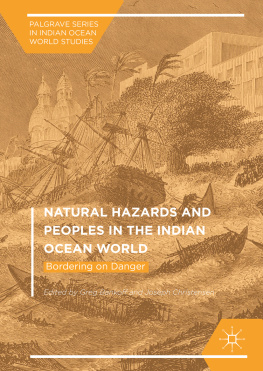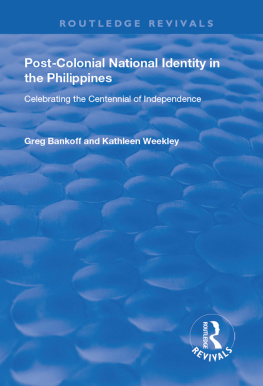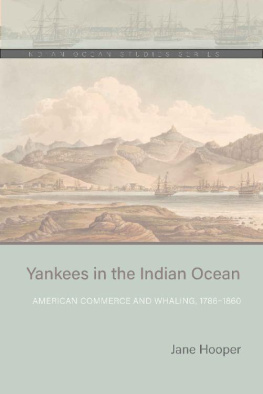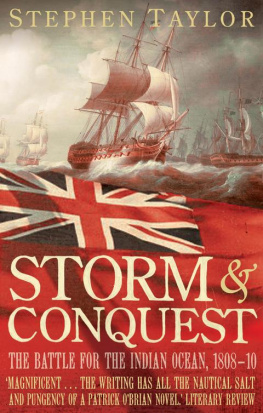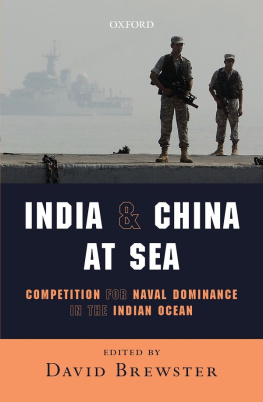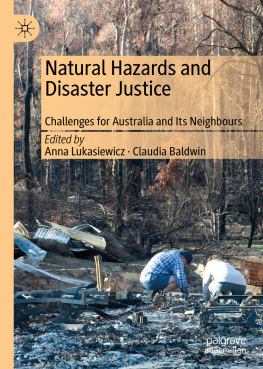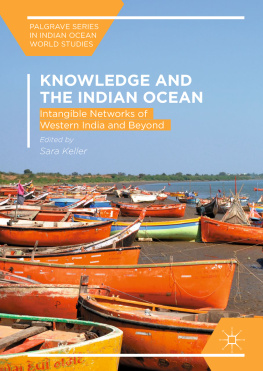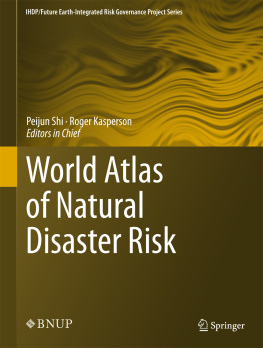1. Bordering on Danger: An Introduction
Danger never lies far from the lives and minds of the people bordering the Indian Ocean. It is present in the air above, it bides its time in the ground below, and it lurks in the waters in between. Recent historiography has taken a turn towards a more transnational perspective as scholars attempt to come to terms with the difficulty of writing about the past in a globalised age. The term transnational, of course, is older, rooted in the sociological fabric of nineteenth-century America whose migrants had transcended Old World nationalisms and had created in its place a world federation in miniature. The contributions in this collection respond to Boses suggestion that disasters act to bind the peoples of the Indian Ocean together and link them to the world beyond. By placing natural hazards at the centre of Indian Ocean history, examining cross-cultural and trans-temporal themes in how communities coped with danger across time, the volume seeks to present a new, transnational understanding of the regions past.
Any attempt at discussing the historical unity of the IOW must begin with the work of Kirti N. Chaudhuri. While acknowledging a great debt to Fernand Braudels recognition of the connection between the Mediterranean Sea and the peoples who live around its shores,
Chaudhuris writings reveal a conscious effort to move beyond a historiographical framework focussed on the modern nations based on former European colonial empires of the Indian Ocean rim.
It is perhaps to be expected that such histories would have a strong environmental bias in terms of both subject and method, that scholars who share a more transnational perspective would examine units that spill over and seep through national borders and study the connections across national boundaries and the circulation of ideas, people and products these enable.
Fig. 1.1
The Indian Ocean World, showing locations covered by chapters in this book
Yet the environment has rarely figured in transnational histories even though environmental histories of change that had little to do with national borders was one of the original examples offered by Ian Tyrell as a fruitful direction for further analysis.
Might there be a different basis for investigating the unity or otherwise of Indian Ocean history? If the wind patterns are central to determining the pace and rhythm of trade and cultural exchange across this ocean world and beyond, so the sea was also responsible for much of the risks that bound the people of these littoral societies together. On the water, craft of all kind, from fishing boat to merchant ship, faced the perils of wind and storm that shipwrecked many a mariner and sent many a vessel to the bottom. Off the water came hazards of a completely different magnitude and scale: tropical cyclones that caused havoc to town and country alike, destroying homes and ruining crops, and tidal surges that often obliterated all traces of human activity along the shoreline. The changing relationship of land and sea with the planets rotation, the continental landmass to the north that warmed more quickly and the ocean to the south that cooled more slowly, not only generated the monsoons but also were partly responsible for the floods and droughts that all too frequently afflicted populations far into the interior. Danger, too, lay in the land itself, in the geophysical hazards that were more specific to certain sub-regional landmasses: the seismicity of its eastern edge (forming part of the Pacific Ring of Fire) and along its northern fringe (the AlpineHimalayan belt), the volcanism of the Indonesian and Philippine archipelagos and its southern islands, Mauritius, Runion and the Comoros, and finally the devastating tsunamis that infrequently ravage coastlines from shore to shore. Climate and geology are therefore responsible for many of the hazards that afflict the lands and peoples of the Indian Ocean so that the peoples and nations that border it also share a common historical experience of risk.
An Ocean of Risk
Hazards, then, bind the Indian Ocean together and link it to the world beyond. They also provide a basis for comparison and assessment of the peoples who live along its shores. How did different societies adapt to and manage risk? How have these social, cultural and economic adaptations over the centuries influenced culture, and how has culture influenced the nature of risk? Social scientists have long been intrigued by the idea that people who are frequently exposed to hazard adapt their behaviour to accommodate risk and that these patterns can become embedded in cultures over time. Interest is not so much in the one-in-one hundred-year big events as with the smaller scale, more frequent hazards that can be regularly anticipated. The constant recurrence of such events, it is argued, can give rise to alternative normative structures that replace routine social norms with ones more in accord to a time of crisis: that is the very frequency of hazard can engender cultural adaptation or those adjustments, actual and potential, social, psychological and physical, which are used by residents of such areas in their efforts to cope with disasters which have struck or which tradition indicates may strike in the future. Both these kinds of hazards are present and have affected peoples and societies.
The dangers common to all peoples of the IOW are those that originate in the ocean itself in the form of climatic variability associated with the El Nio Southern Oscillation (ENSO) phenomenon. In popular usage, El Nio refers to the recurrent large-scale oceanatmosphere fluctuations that take place on an average three- to five-year cycle when variations in barometric pressure over the Indian Ocean are mirrored by variations in the Eastern Pacific. An El Nio event occurs when a pool of warm water moves eastward across the Pacific accompanied by high air surface pressure in the eastern Indian and western Pacific Oceans. The opposite La Nia phase takes place when warmer waters shift westward away from South America and lower than normal air pressure dominates over the western Pacific. In the Indian Ocean, the effects of ENSO variations are coupled by the Indian Ocean Dipole (IOD), which refers to variations in temperature gradients across equatorial waters between the western (Arabian Sea) and eastern Indian Ocean (eastern Timor Sea).
Danger comes off the sea, too, in the form of regular tropical cyclones and their frequently accompanying storm surges, as well as the much less common tsunamis. When the Indian Ocean cyclone season is merged with the Australian season and the annual north-west Pacific typhoons, the region accounts for over 70 % of the worlds annual tropical cyclone activity. North of the equator tropical cyclones mainly form between May and November, and south of the equator from December to March, though destructive, out of season cyclones are not unknown. Early season cyclones mainly form in the warm waters of the Timor and Coral Seas and generally move in a south-south-westerly direction towards the Australian continent, while the few that originate over the Bay of Bengal move in straight lines west to strike India. These tropical cyclones often carry great amounts of precipitation. Late-season cyclones primarily develop north of 5 in the Arabian Sea and Bay of Bengal, are larger and have stronger winds that have the potential to cause enormous death and destruction as they make landfall on the low-lying but heavily populated coastlines of India, Bangladesh, Myanmar and less commonly the island of Sri Lanka. Some late-season cyclones will often travel great distances across the South Indian Ocean before swinging south-east to hit the Mascarene Islands, Madagascar and occasionally even mainland Africa along the Mozambican coast.

